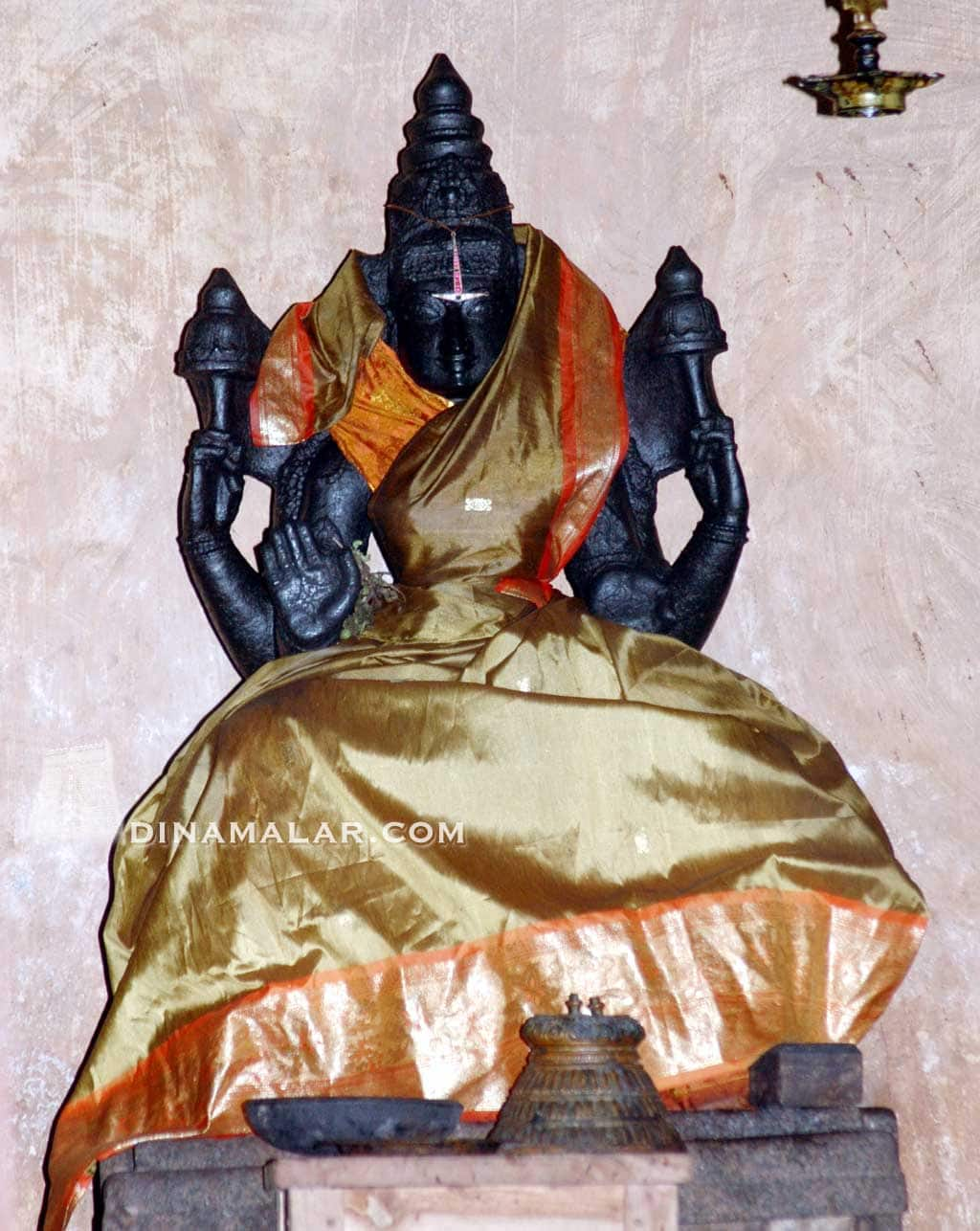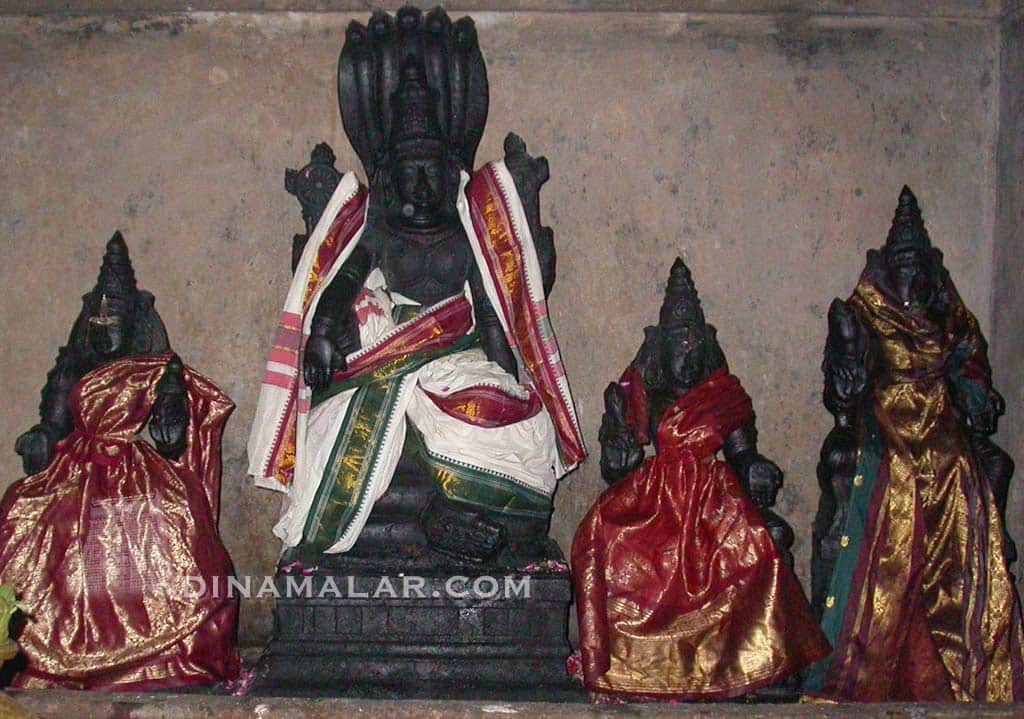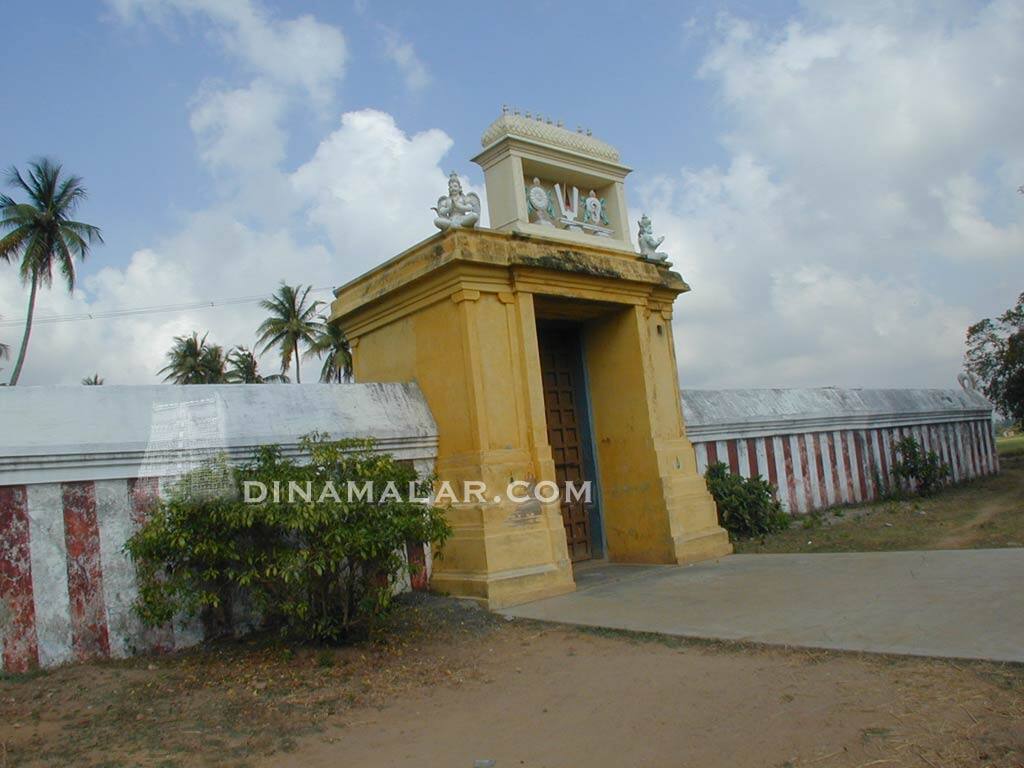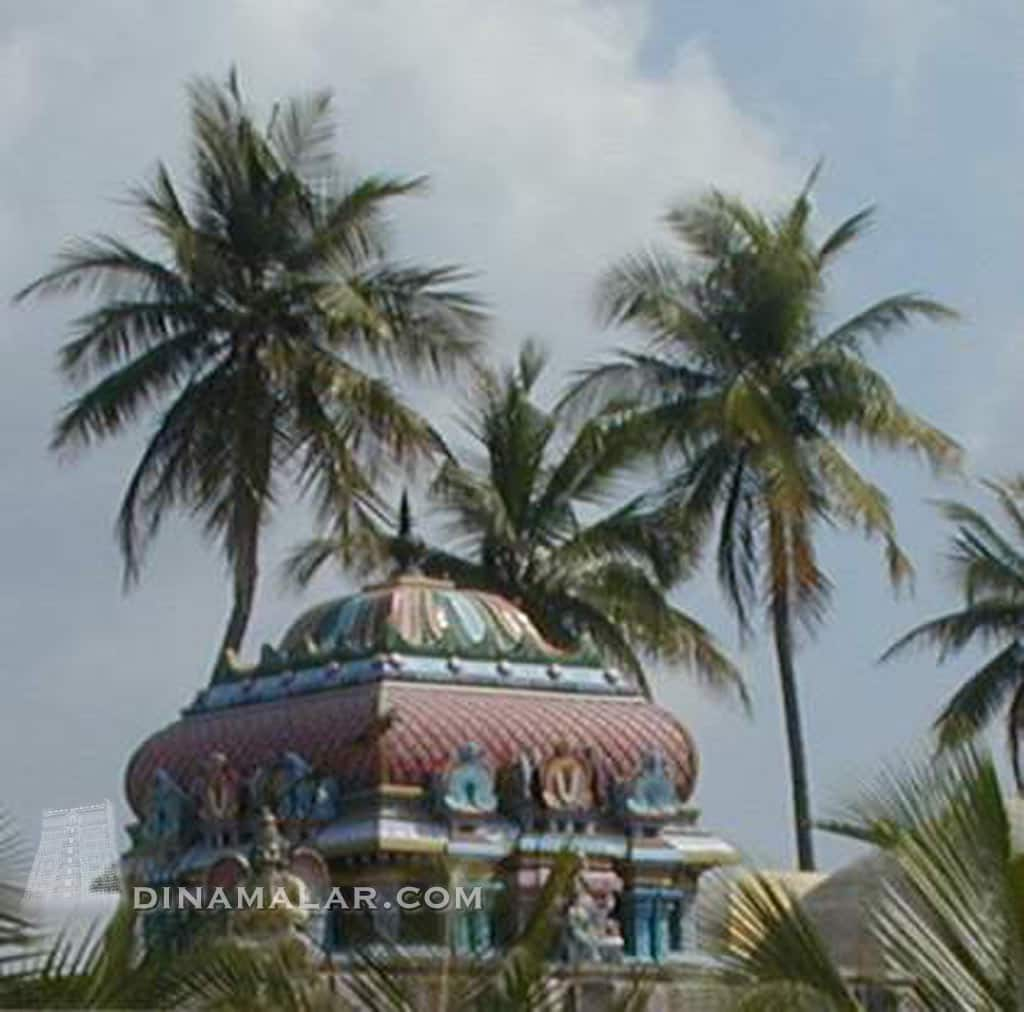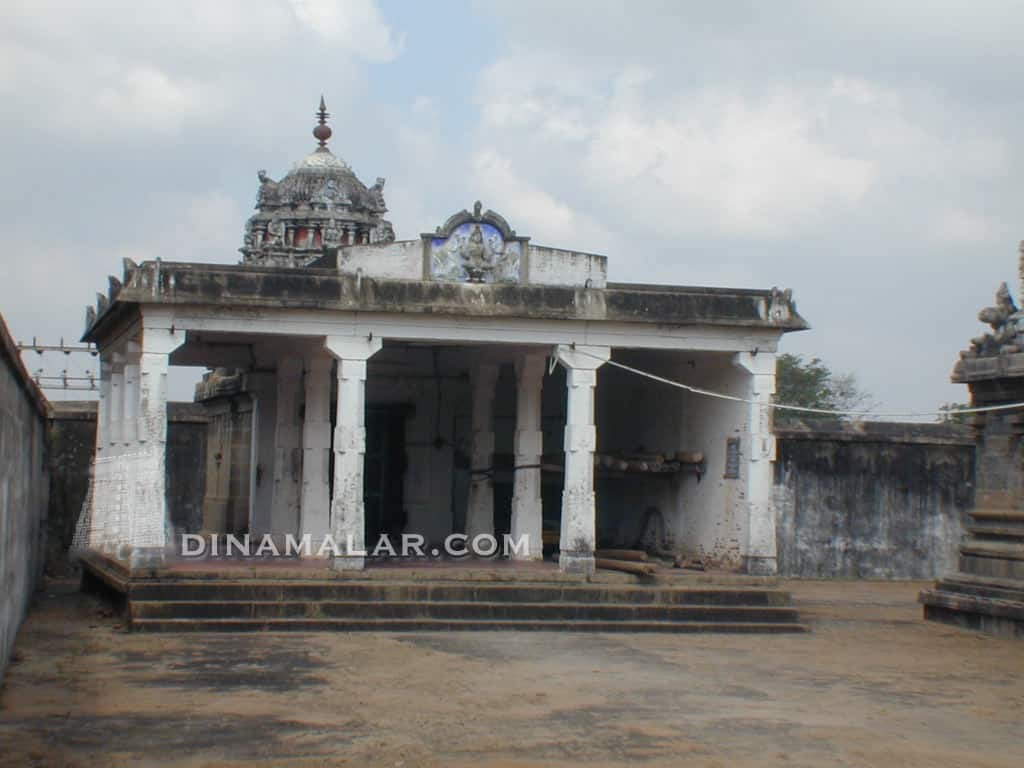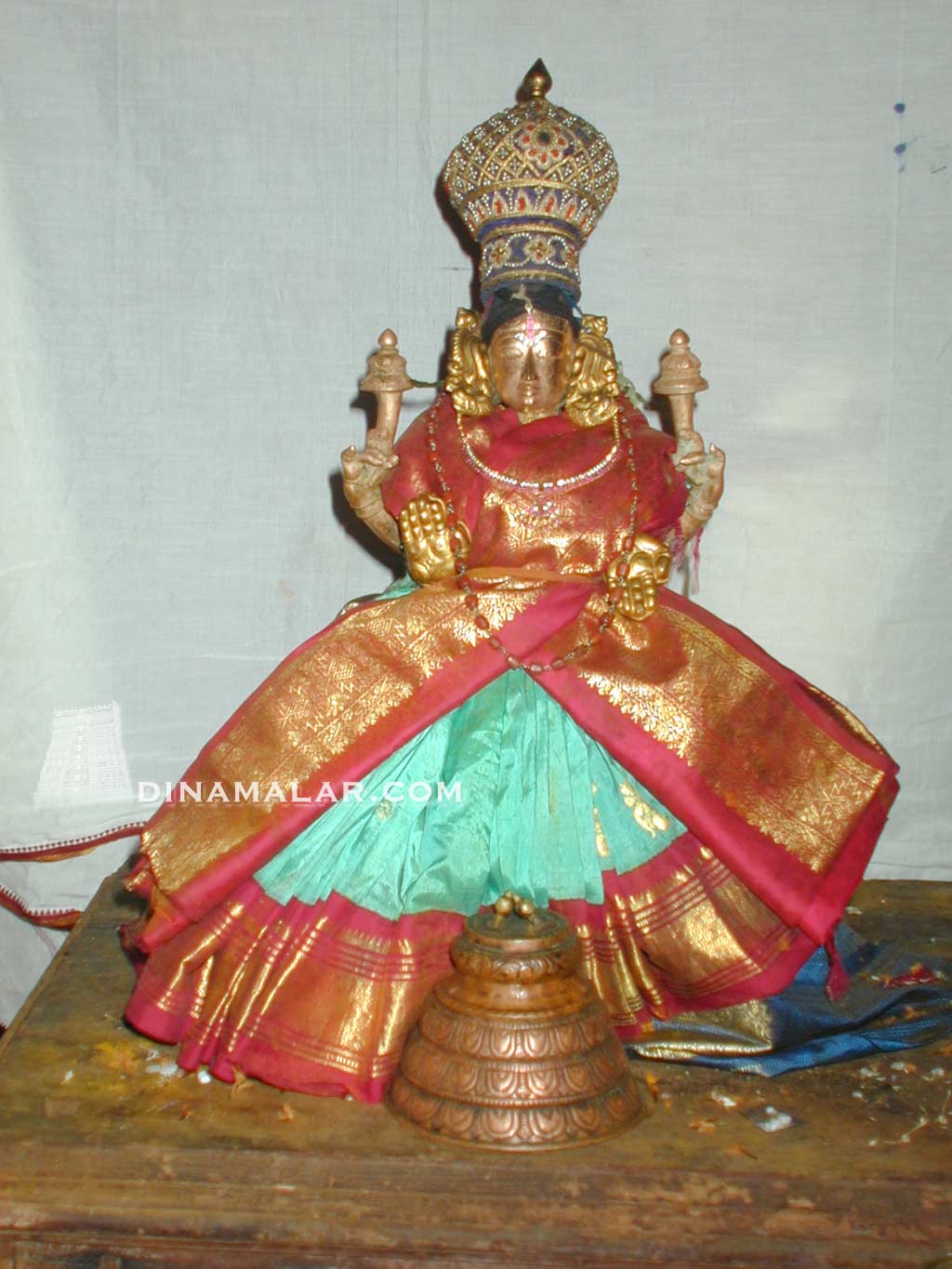GITA 10.5
 |
| SRI ANDAL |
Neelathungasthanagirithati mutpotya trushnam
parartyam svam srutisiras siddhimadyapayantim
svocchishtayam srajanigalitham yabalatkrutya bungte
godha thasmai namaidhamitam bhuyaevastu bhuya:
This sloka was composed by Swami Parashara Bhattar in praise of Sri Andal. She excels even the Alwars by Her poems and was born in the month of Aadi, Pooram star [today 4th August 2008, is Her Tirunakshatram]. In the Kshetrams of Tirunangur, She graces in a separate sannidhi only in Arimeya Vinnagaram. In the 6th pasuram of Tiruppavai [புள்ளும் சிலம்பின காண்], She says we should slowly get up from bed and chant the Divine name of Hari, like great sages and Yogis ('வெள்ளத்தரவில் துயில் அமர்ந்த வித்தினை உள்ளத்துக் கொண்டு முனிவர்களும் யோகிகளும் மெள்ள எழுந்து அரி என்ற பேரரவம்'). We should desire what Sri Andal and Sri Krishna desired. Sri Andal imagined Herself to be one among those who were present in Sri Krishna Avatar. Though She was born in Sri Villiputtur, She forgot that and considered as one living in Gokulam! Her Tiruppavai was dedicated to Sri Kudamaadukootthan, that is Sri Krishna. He was a Cowherd [ஆயன் ]and Sri Andal considered Herself as Cowherd woman [ஆய்ச்சி]. So, Tiruppavai is a Cowherd Woman sang in praise of a Cowherd! In the Tirunangur Kshetrams, the Lord graces as Sri Krishna in Three Divyadesams: In Parthanpalli, He appears as Sri Parthasarathy. In Tirukkavalampadi, He appears as Sri Krishna. And, in Arimeya Vinnagaram, He is Sri Kudamadukootthan. It is possible that the Lord Sri Krishna in Parthanpalli and in Tirukkavalampadi, could be quite old. But the Lord in Arimeya Vinnagaram is the naughty Child Sri Krishna. Sri Andal also was a very small girl and so it is possible that She liked the Lord here, in this Kshetram, and so is residing in a separate sannidhi, in this Kshetram only! She has repeated the name Hari in Her Tiruppavai and Hari is the name of this Kshetram also. Tirumangai Alwar in his Periya Tirumozhi (Pasurams 3.10.8 & 9), while singing about this Kshetram, lists all the pranks of the Lord as Sri Krishna. He is the One, Who stole butter, Who swallowed curd, sucked the breast of the Demon Poothana and Who danced with pots. We understand from these pasurams that Sri Krishna is the Lord and He is appearing as Sri Kudamadukootthan. As He grew older, He preached Gita, as Sri Parthasarathy.
We are now studying the Chapter 10. We see two aspects of Sri Krishna: One, as a Preacher; and the other is His behaviour. Are we to follow what He practised or what He preached? It is difficult to follow what all He did, like stealing butter, getting tied, being beaten, telling lies and much more. But His preachings are all sweet. Whatever He practised as Sri Rama, He is preaching as Sri Krishna. So preachings are more important in Sri Krishna avatar, while we have to follow the practices of Sri Rama. Sri Krishna is preaching us to follow the qualities of Sri Rama. We have a mixture of good and bad qualities. These are all the variants of our mind. These are exhibits of our mind at various times and situations. Twenty such qualities are told in two slokas 4th and 5th, and the Lord says all these qualities are created by Him. He calls as pravruthi - activation and nivurthy - inactivation. Action and inaction, both are as per His command. Our good qualities and unwanted temperaments are in His domain. In sloka 4, the Lord listed 13 qualities. Now sloka 5:
ahimsa samata tustis
tapo danam yaso ’yasah
bhavanti bhava bhutanam
matta eva prithag-vidhah
tapo danam yaso ’yasah
bhavanti bhava bhutanam
matta eva prithag-vidhah
"nonviolence, equanimity, satisfaction, austerity, charity, fame and infamy—all these various qualities of living beings are created by Me alone."
The Lord says that all these mind variations are because of Him. Prithak vidah = different types of, bhava = behaviour of, Bhutanam = all living beings, matta eva = by Me [Sri Krishna] alone, bhavanti = happen. That is, all the various behaviours of all living beings are all at His command. Nammalwar says that standing, sitting, lying down or inaction - everything is in His control. We will see the Seven qualities listed in this sloka. Ahimsa = exact opposite of Himsa. It means not being responsible for others' misery. Being responsible for others' plight is Himsa. Why Swami Ramanuja interprets ahimsa like this? We will see that shortly. Samata = showing equal attitude to receipts by us and by others. Tusti = showing satisfaction with every living being, without any partiality. Tapa = reducing our comforts and bearing discomforts. Whatever Shastras say to endure discomforts. Dhanam = donating the liked ones and which are owned by us, to others. Yasa = fame of good character, ayasa = fame of bad character. All these [20] qualities are happening because of the Lord. Why should He tell this? Because Bhakti also happens because of the Lord alone. Normally, we think it is because of our actions and efforts, we get all these 20 qualities listed. Sri Krishna refutes that thinking. These qualities are activated in us by His control; and, similarly, Bhakti also is in His control. So we should have devotion in Him to get Bhakti. We will see the explanation of these Seven qualities. Ahimsa does not mean simply avoiding injury to others. A surgeon causes certain injuries to us to solve some ailments. It is not himsa, as the suffering is for a temporary period to get us durable happiness. Parents sometimes beat the children to correct. Those actions can not be called himsa. Samata means impartial and same attitude, whether we receive something or same things are received by others. Whether we lose or others lose, we should be either neutral or show the same sorrow. Tusti means dispassionate regard and love for all. Sage Parashara says in Sri Vishnu Puranam, that a Sri Vaishnava has equal attitude to all; he has none as dear or unwanted. Tapa means undergoing discomforts as prescribed in Shastras. We may be uncomfortable when affected by a disease, but that is not tapa. Remaining without food on Ekadasi is tapa. Sages perform tapas like this. DhAnam means not simple gifting away. The property we gift should be dear to us and it should be owned by us. Then only it is dhAnam. Giving away our unwanted things or gifting other's possessions are not dhAnam. We will now take leave of this Kshetram.
(continued)

